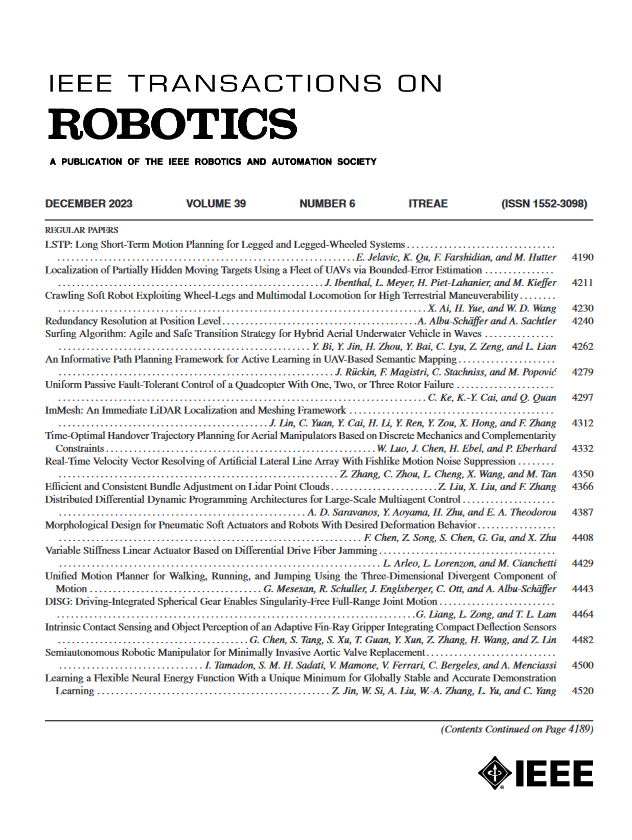Industrial Robots Energy Consumption Modeling, Identification and Optimization Through Time-Scaling
IF 9.4
1区 计算机科学
Q1 ROBOTICS
引用次数: 0
Abstract
Industrial robots (IRs) have considerable energy-saving potential due to their vast application scale and wide range of applications. Although substantial work on the energy consumption (EC) optimization of IRs has emerged, most optimization approaches require prior knowledge of the IRs' dynamic characteristics and the electro-mechanical parameters of their drive systems, which are typically not provided by IR manufacturers. Therefore, this article proposes an EC modeling and optimization method based on the time-scaling technique and custom identification experimental data without joint torque information. Specifically, this article develops an energy characteristic parameter submodel (ECPSM) to formulate the EC resulting from configuration transitions. In addition, theoretical proof demonstrates that all coefficients in the proposed ECPSM can be identified based on the data of a finite number of identification experiments. Building upon the proposed EC model, a bidirectional dynamic programming (BDP) algorithm optimizes the IR's trajectory for energy-saving, while utilizing parallel processing significantly reduces the time required for the optimization process. Experimental results on the KUKA KR60-3 demonstrate that the proposed method achieves an average relative error of 1.59% for predicting the EC of linear scaling trajectories and 6.19% for nonlinear scaled trajectories. Moreover, the BDP-based optimization method dramatically reduces the computational time required to obtain the optimal scaling trajectory and its EC.基于时间尺度的工业机器人能耗建模、辨识与优化
本文章由计算机程序翻译,如有差异,请以英文原文为准。
求助全文
约1分钟内获得全文
求助全文
来源期刊

IEEE Transactions on Robotics
工程技术-机器人学
CiteScore
14.90
自引率
5.10%
发文量
259
审稿时长
6.0 months
期刊介绍:
The IEEE Transactions on Robotics (T-RO) is dedicated to publishing fundamental papers covering all facets of robotics, drawing on interdisciplinary approaches from computer science, control systems, electrical engineering, mathematics, mechanical engineering, and beyond. From industrial applications to service and personal assistants, surgical operations to space, underwater, and remote exploration, robots and intelligent machines play pivotal roles across various domains, including entertainment, safety, search and rescue, military applications, agriculture, and intelligent vehicles.
Special emphasis is placed on intelligent machines and systems designed for unstructured environments, where a significant portion of the environment remains unknown and beyond direct sensing or control.
 求助内容:
求助内容: 应助结果提醒方式:
应助结果提醒方式:


